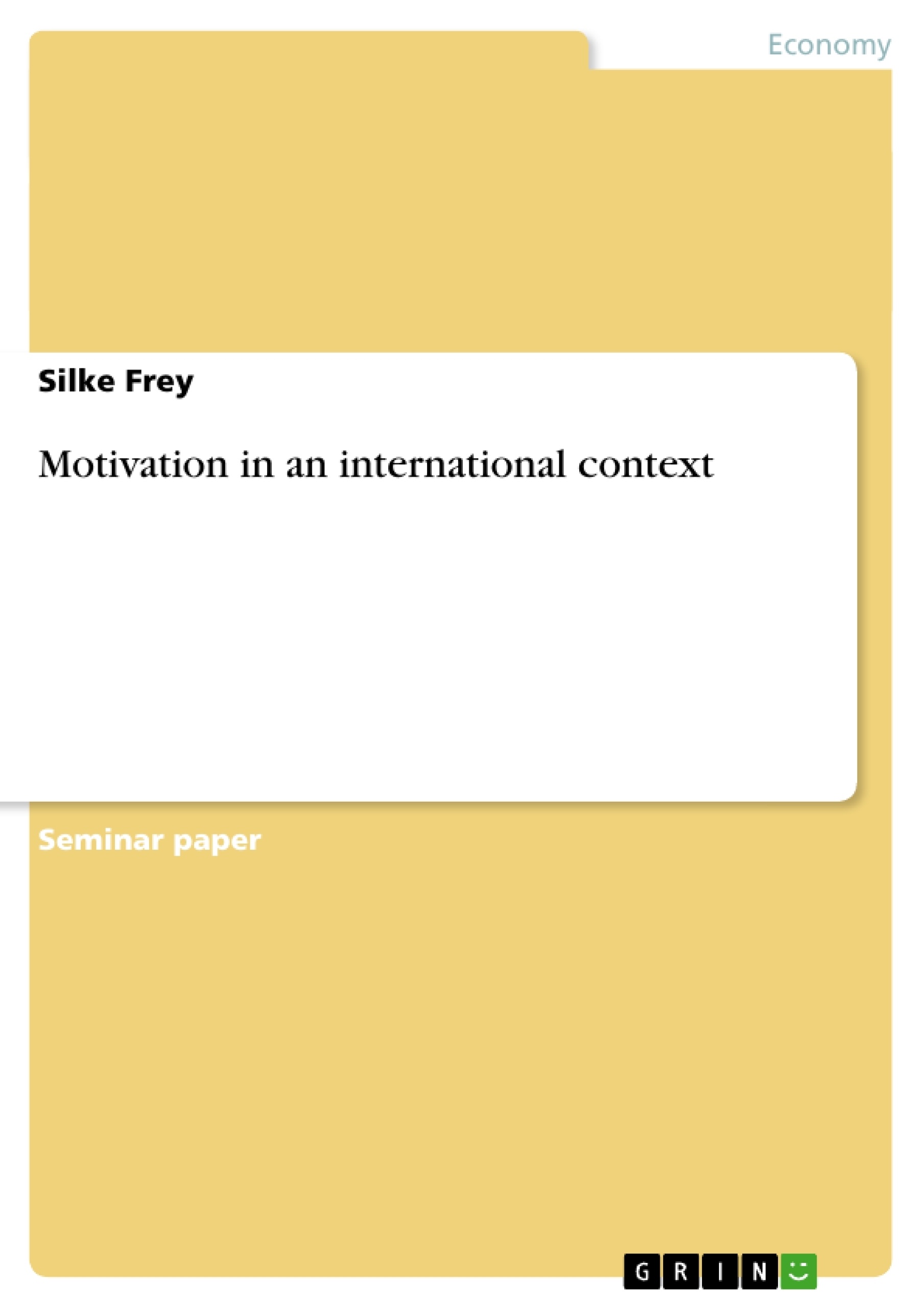Introduction
Differences in external factors like culture, economy, history, political and management systems may lead to differences in employee job attribute preferences across countries. A motivation concept designed for one cultural context may be inappropriate when transferred to another. Assuming, that this is true, managers and designers of motivation systems must understand the preferences of local employees. Therefore, in an international context it is required to examine the differences in motivation from country to country.
Inhaltsverzeichnis (Table of Contents)
- 1. Introduction
- 2. Motivation
- 2.1. What is motivation?
- 2.2. Basic motivation concepts
- 2.2.1. Hierarchy of Needs Motivation
- 2.2.2. Achievement Motivation Theory
- 3. Reward Systems
- 4. Motivation in China
Zielsetzung und Themenschwerpunkte (Objectives and Key Themes)
This assignment aims to evaluate the challenges managers face in culturally diverse business environments, specifically focusing on motivation in an international context. It explores the impact of cultural differences on employee job preferences and examines how motivation concepts developed in one cultural setting may be inappropriate when transferred to another. The assignment emphasizes the importance of understanding local employee preferences and adapting motivation systems to different cultural contexts.
- Cultural differences in employee job attribute preferences
- Challenges of applying motivation concepts across cultures
- Importance of adapting motivation systems to local contexts
- The role of cultural understanding in effective management
- The need for cross-cultural awareness in international business
Zusammenfassung der Kapitel (Chapter Summaries)
The first chapter introduces the topic of motivation in a globalized business environment and highlights the challenges presented by cultural differences. It emphasizes the importance of understanding local employee preferences for designing effective motivation systems.
Chapter two explores the concept of motivation, defining it as the willingness to act for need satisfaction. It introduces basic motivation concepts, including process and content theories, focusing on the latter due to their usefulness in understanding work motivation in specific cultural contexts.
Chapter 2.2.1 delves into Maslow's Hierarchy of Needs theory, outlining the five levels of needs that motivate individuals. It explores the applicability of this theory to the work environment and how different needs can be satisfied in the workplace.
The third chapter explores the role of reward systems in motivating employees. It examines the relationship between rewards and motivation, and how reward systems can be tailored to different cultures.
Finally, chapter four provides a specific case study of motivation in China, highlighting the unique cultural factors that influence employee motivation in this context.
Schlüsselwörter (Keywords)
This assignment explores key concepts such as cross-cultural management, motivation, cultural differences, international business, employee job preferences, motivation theories, content theories, Maslow's Hierarchy of Needs, reward systems, and cultural adaptation.
- Citation du texte
- Silke Frey (Auteur), 2003, Motivation in an international context, Munich, GRIN Verlag, https://www.grin.com/document/34049



